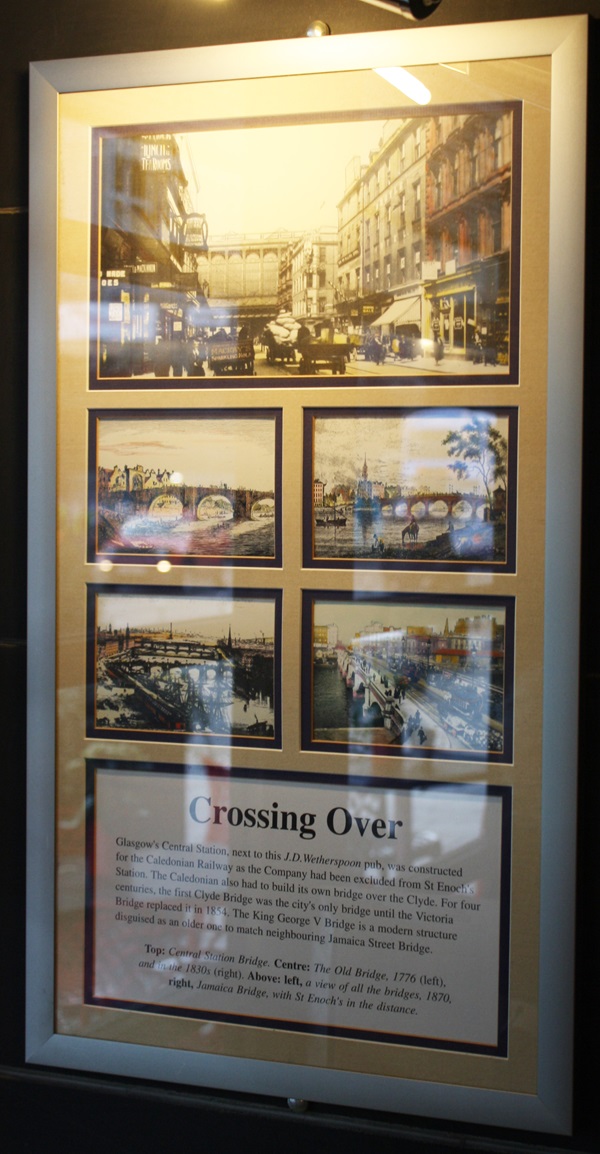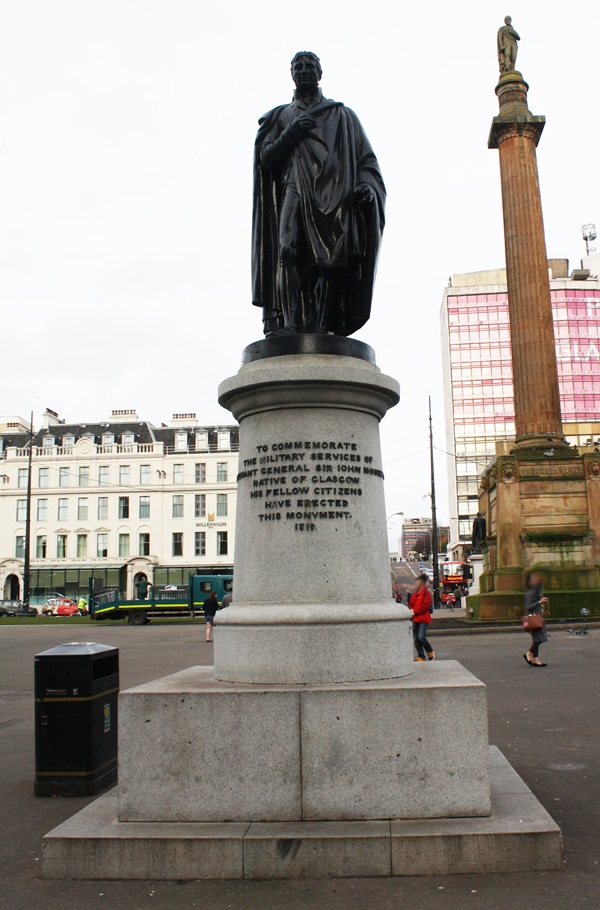Pub history
The Sir John Moore
This is named after the Glasgow-born soldier Sir John Moore, whose likeness was cast from brass cannons and who was the first statue to be unveiled in George Square in 1819.

260–292 Argyle Street, Glasgow, G2 8QW
This is named after the Glasgow-born soldier Sir John Moore, whose likeness was cast from brass cannons and who was the first statue to be unveiled in George Square in 1819.
Framed prints and text about Sir John Moore.

The text reads: Sir John Moore’s retreat to Corunna, and his last stand there on the 19th January 1809 against the French that enabled his army to embark and escape to England, is celebrated as one of Britain’s great defensive military actions
When Napoleon defeated the Spanish army, he expected the small British force would retreat into Portugal, whence he would ‘hurl them into the sea’. But Moore moved north, threatening his communications. Napoleon’s plan to subjugate Spain had to be laid aside. Moore, “the only general worthy to contend with me” according to Napoleon, was killed at the moment of Victory at Corunna.
In Glasgow, where he was born in 1761, a monument, cast from cannon captured in the Peninsula War, was unveiled in George Square in 1819. In Corunna, the British only had time to dig him a shallow grave. It was Marshal Soult, commander of the French forces, who erected a plinth “to mark the spot where so worthy an adversary lay”.
Framed prints and text about Grahamston.

The text reads: A 1782 map marks the area around this Wetherspoon pub as the site of a village named Grahamston. It is said that beneath Central Station lies an entire street of shops and houses.
This part of Argyle Street was once called Anderston Walk, as it led from the city to a village, originally called Anderson’s Town. This settlement was laid out from the 1830’s by John Orr, who had bought part of the estate of James Anderson of Stobcross House.
The first residents were weavers, and weaving soon became a major industry. Anderson was also home to the famous Delftfield and Verreville potteries, where the great inventor James watt was employed as an advisor.
Framed photographs and text about shopping on Argyle Street.

The text reads: One of the best-known of the shops in Argyle Street was ‘the Poly’, or Royal Polytechnic. The building, later occupied by Lewis’s, has survived and is now attached to the new St Enoch centre. The Argyle Arcade is the last survivor of Glasgow’s eight 19th Century arcades, and was built in 1827 by John Baird. Baird was also the architect of the famous Gardner’s Building in the nearby Jamaica Street, which is now J.D.Wetherspoon’s Glass House pub.
Top: Argyle Street and the Royal Polytechnic (left)
Centre: The Poly’s Byzantine Smoke Room (left) and Louis XVI restaurant (right)
Above: left, Argyle Arcade, right, Gardner & Sons warehouse
Framed prints and text about James Watt.

The text reads: Nearby watt Street, connecting Argyle Street with the Broomielaw, was named after the famous engineer who once lived there. It had once been called Delftfield Lane, from the pottery which employed Watt as an adviser. Watt was born in Greenock, where a J.D.Wetherspoon pub is named in his honour. His statue in George Square, Glasgow, is outside J.D.Wetherspoon’s The Counting House. Another memorial, a large boulder on Glasgow Green, marks the spot where Watt thought up the separate condenser, the key to Britain’s Industrial Revolution.
Top: James Watt
Above: left, Boulton & Watt paddle engine, right, James Watt’s house, Delftfield Lane, c1847
Framed prints and text about Glasgow Central Station.

The text reads: Glasgow’s Central Station, next to this J.D.Wetherspoon pub, was constructed for the Caledonian Railway as the company had been excluded from St Enoch’s Station. The Caledonian also had to build its own bridge over the Clyde. For four centuries, the first Clyde Bridge was the city’s only bridge until the Victoria Bridge replaced it in 1854. The King George V Bridge is a modern structure disguised as an older one to match neighbouring Jamaica Street Bridge.
Top: Central Station Bridge
Centre: The Old Bridge, 1776 (left) and in the 1830s (right)
Above: left, a view of all the bridges, 1870, right, Jamaica Bridge, with St Enoch’s in the distance
Brass sculptures inspired by Sir John Moore.


A statue of Sir John Moore in George Square.

The statue is to commemorate the military services of Lieutenant General Sir John Moore. As a native of Glasgow, his fellow citizens have erected this movement, 1819.
External photograph of the building – main entrance.




